Vegetable Broth
Published Mar 23, 2012•Updated May 31, 2025
This post may contain affiliate links. Please read our disclosure policy.
Broth is having a moment and good-quality store-bought broth can be pricey. This Homemade Vegetable Broth recipe makes it easy to make your own broth at home. Make a big batch to freeze or use it right away, in recipes or for sipping. I’ve been making this recipe for years anytime I have some kitchen scraps, and it always feels like finding gold to discover some in the freezer.

If you’ve never made vegetable broth at home, prepare to become a fan. I’ve been making homemade broth since the earliest days of this website (2010!) and whenever I run out and have to use store-bought broth I notice a difference. If you’re ready to make it, you’ll never believe how simple it is to do or how much more flavorful homemade broth can be.
All you have to do is combine all your leftover vegetables in a pot and let them simmer away on the stove. In no time, you’ll have a rich, savory broth perfect for soups, stews, and casseroles! It’s a staple in my routine along with my regular meal prep – see my meal prep 101 guide for details.
Prepare a large batch at once, and you’ll never go back to pre-made broth again!
Can I freeze vegetable broth?
You can, and I would argue that you should freeze vegetable broth! Anytime you have some broth leftover, transfer it to resealable freezer bags or freezer-safe jars (leave about an inch of space at the top to allow for the liquids to expand as they freeze). Press out as much air as possible and use it within 6 months for the best results.
More Broth Ideas
Looking for more homemade broth and stock options? Be sure to try out my homemade turkey stock and Instant Pot chicken stock, too!
Ingredients
- Onion – I recommend using yellow or white onions for a sweeter taste, but red will also work. Use both leftover onion skins and peel!
- Mushrooms – Any type! Slice them in half before adding them to the pot.
- Carrots – Break them into small pieces to allow the flavor to absorb into the liquid.
- Celery – Again, break the stalks into small pieces.
- Garlic – Use four garlic cloves (or more if you love a strong garlic taste), and crush and peel the garlic skins before adding them to the pot.
Pin this now to save it for later
Pin It NowPossible Variations
One of the great things about this veggie broth recipe is that pretty much anything goes. Feel free to incorporate any extra veggies you have on hand. Great additions include:
- Leeks
- Fennel
- Fresh Herb Stems
- Bay Leaves
- Corn Cobs
- Scallions
- Parsnips
- Peppercorn
How to Make Homemade Vegetable Stock
- Combine – Add all the veggies to a large stock pot with a lid, and pour water on top.
- Simmer – Bring the water to a boil, reduce the heat, cover, and simmer until the broth is light golden in color.
- Flavor – Give the liquid a taste test, and add kosher or sea salt, pepper, or your seasonings of choice if desired.
- Strain – Pour the broth through a fine mesh strainer, and let it cool completely. Or, use it immediately!

Tips for the Best Results
- Roast the Veggies – For even more flavor, drizzle the veggies with olive oil, and season with salt. Then, roast at 400°F until they’re tender and golden, stirring occasionally. Remove from the oven, and proceed with the recipe as usual.
- Avoid Bitter Options – While you can technically make vegetable broth with any veggies, some options are better than others. I recommend avoiding cruciferous vegetables like cauliflower, broccoli, or cabbage as they can make your broth bitter.
- Keep an Eye on the Time – If you let the water boil too long, it will evaporate, and you’ll be left with burnt vegetables, which we definitely don’t want. About 30 minutes is all you need!
Ways to Use
Use this recipe in any dish that calls for vegetable stock or broth! It works great to add a savory flavor to cozy soups like Green Curry Vegetable Ramen, Miso Vegetable Soup, Easy Miso Ramen, or Morrocan Lentil Soup. Or, include it in main courses and sides like Vegetable and Rice Stuffed Peppers or Roasted Vegetable Couscous instead.
FAQs
Yes, as long as you do not use leftover veggie scraps that have been in contact with non-vegan ingredients, vegetable broth is completely vegan.
Once cool, you can transfer the leftover broth to an airtight container or jar, and store it in the refrigerator for up to one week.
Yes! I love to prep large batches to freeze for later. It will last for up to 4 months. Just be sure to leave space at the top of your containers as the liquid will expand as it freezes. Thaw in the fridge overnight when you’re ready to use.
More Meal Prep Ideas
Favorite Tools
Pin this now to save it for later
Pin It Now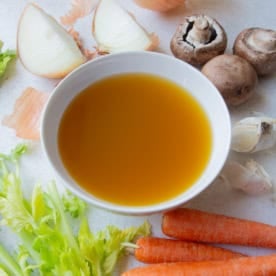
Vegetable Broth
Equipment
- Knife
- Cutting Board
- Large Stockpot with Lid
- Sieve
Ingredients
Choose any or all of the following vegetables:
- 1 onion, quartered
- 8 ounces mushrooms (any type), halved
- 4 carrots, broken into small pieces
- 4 stalks celery, broken into small pieces
- 4 large garlic cloves, crushed and peeled
Additional ingredients:
- 1 tablespoon olive oil (only if roasting)
- 8 cups water
- 1 bay leaf
- kosher salt (optional)
Instructions
- In a large stockpot with a lid (be sure to use an oven-safe one if taking the optional step to roast), combine the vegetables.
- Optional step to roast (see note): Preheat oven to 400°F. Drizzle oil over the vegetables; toss to coat. Sprinkle with 1/2 teaspoon kosher salt. Roast vegetables until tender and golden, stirring occasionally, about 40 minutes. Remove from oven.
- Pour water over the vegetables (if you roasted it first, scrape up any browned bits on the bottom of the pan).
- Bring the water to a boil. Reduce heat, cover and simmer 30 minutes. Taste the broth. If you would like to season it lightly with salt, you can add some now. (If you roasted the vegetables keep in mind that they are already lightly seasoned.) Seasoning the broth at this stage is optional – you can always season it later when you use it in a recipe.
- Strain broth through a sieve and let cool completely.
- Use immediately, refrigerate for several days, or freeze.
Notes
Nutrition
Nutrition information is automatically calculated, so should only be used as an approximation.
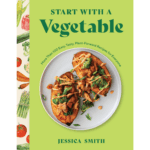


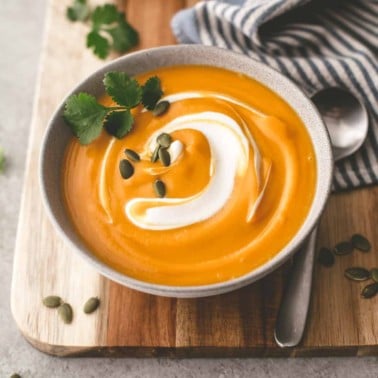
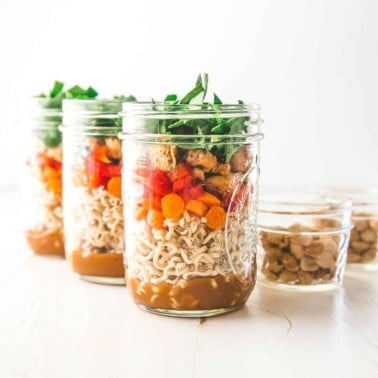

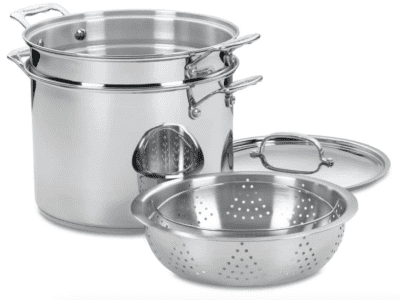
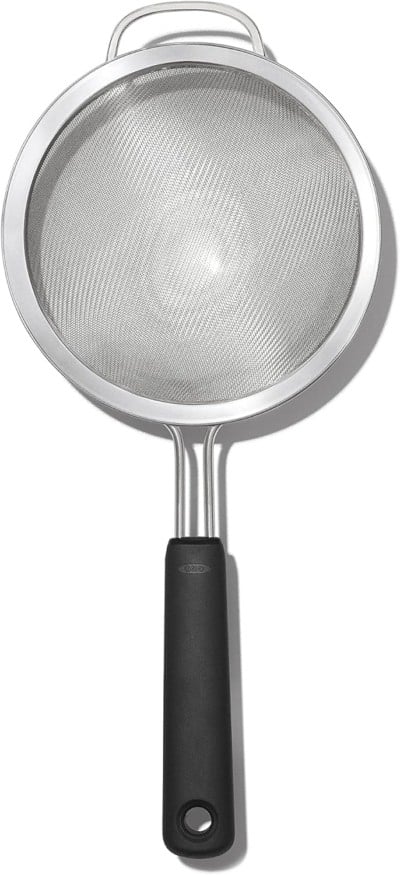
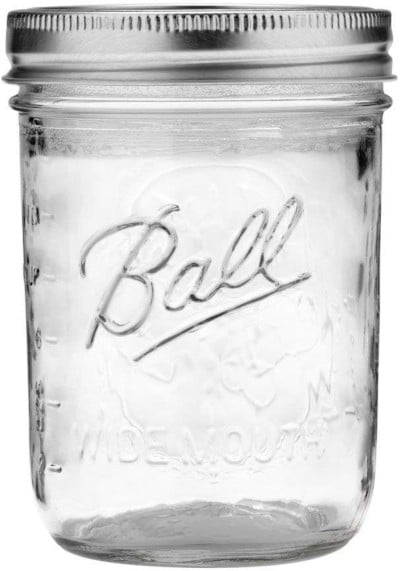


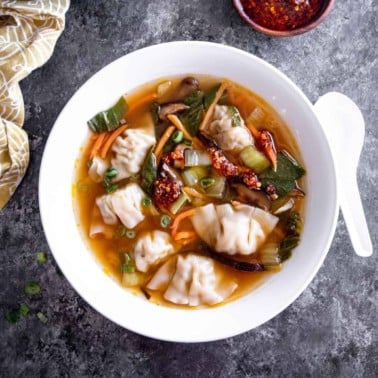










By the way, when I make “stock”, I use this basic recipe (as you can see, it uses no salt) – https://inquiringchef.com/2011/03/15/on-making-stock-and-slowing-down/. It is full of flavor, but those flavors really only come out once it is used in another dish. I find that this stock works great when I want to add flavor but want control over the salt content. I cook quinoa and basic grains in this stock. I also use it any time I make a sauce (salted broth could become far too salty when it reduces into a sauce).
My english sometimes fails, but, what is the difference between broth and stock? The cooking method of the broth seems quicker andd easier when compared to a traditional vegetables stock.
Fabio – it’s a great question, and I’m certainly no expert, but I think of stock as an unseasoned base for other dishes. Traditionally, in Thailand, cooks don’t add salt to stock, so it doesn’t taste great on its own. The idea is that if you use stock, you add salt to the dish as you go.
Broth, on the other hand, is salted and seasoned enough that it should taste good on its own. My favorite broths (like the one above) only need some vegetables thrown in to make a great soup. They should require little else.
Having said all that, I use the two interchangeably and just add salt and other seasonings as needed. Thanks for the great question/comment!
Perfect, even so I loved the idea of using broth instead of stock. I’m studying culinary arts and i just prepared stock twice. It takes too long for the flavor come out. At home, unfortunately, i use bouillon cubes.
Loved your blog.
Regards,
Fabio – Brazil
I tend to use whatever vegetables we have in the fridge as a good “clean-out”. In the past I’ve used: corn cobs, broccoli stems, parsley stems or the ends of asparagus. They all taste great, so play around with different things (or what you can’t use up).
Great suggestion – I’ll have to try it with different vegetables that you suggest!
Wow, I bet you’d get amazing depth of flavour from roasting the veggies first, great idea. When I lived in Vancouver and had a deep freezer in my apartment I used to make veggie broth and freeze it all the time. Now in Sweden I’ve got a smaller apartment with a smaller fridge a way smaller freezer, and no deep freezer. I really should look into buying another deep freezer because it opens up so many possibilities for cooking seasonally and in bulk and stashing things away. For now it’s a supreme battle for freezer space – mostly my soups, muffins, purees vs the husband’s beer mugs. I usually win, except for on weekends (and except for when I find him icing his tired runners legs with a packet of frozen pumpkin puree!)
I totally hear you – I find myself wishing I had a deep freezer all the time, although there would definitely not be space for it in our current place. As a result, freezer space is at a premium and definitely good evidence of what we value most. Ours is currently full of bagels, which is an easy sell for my husband!